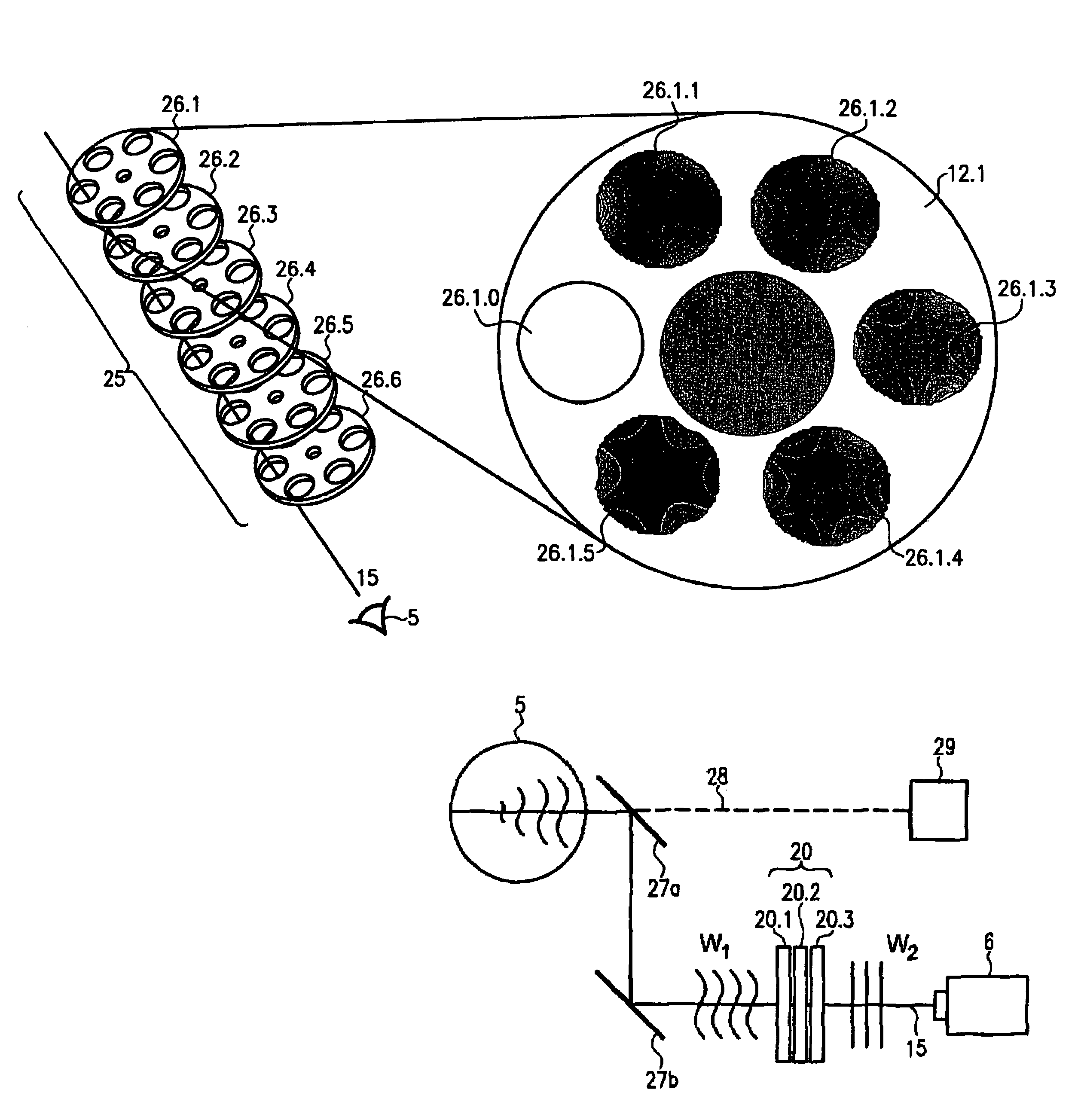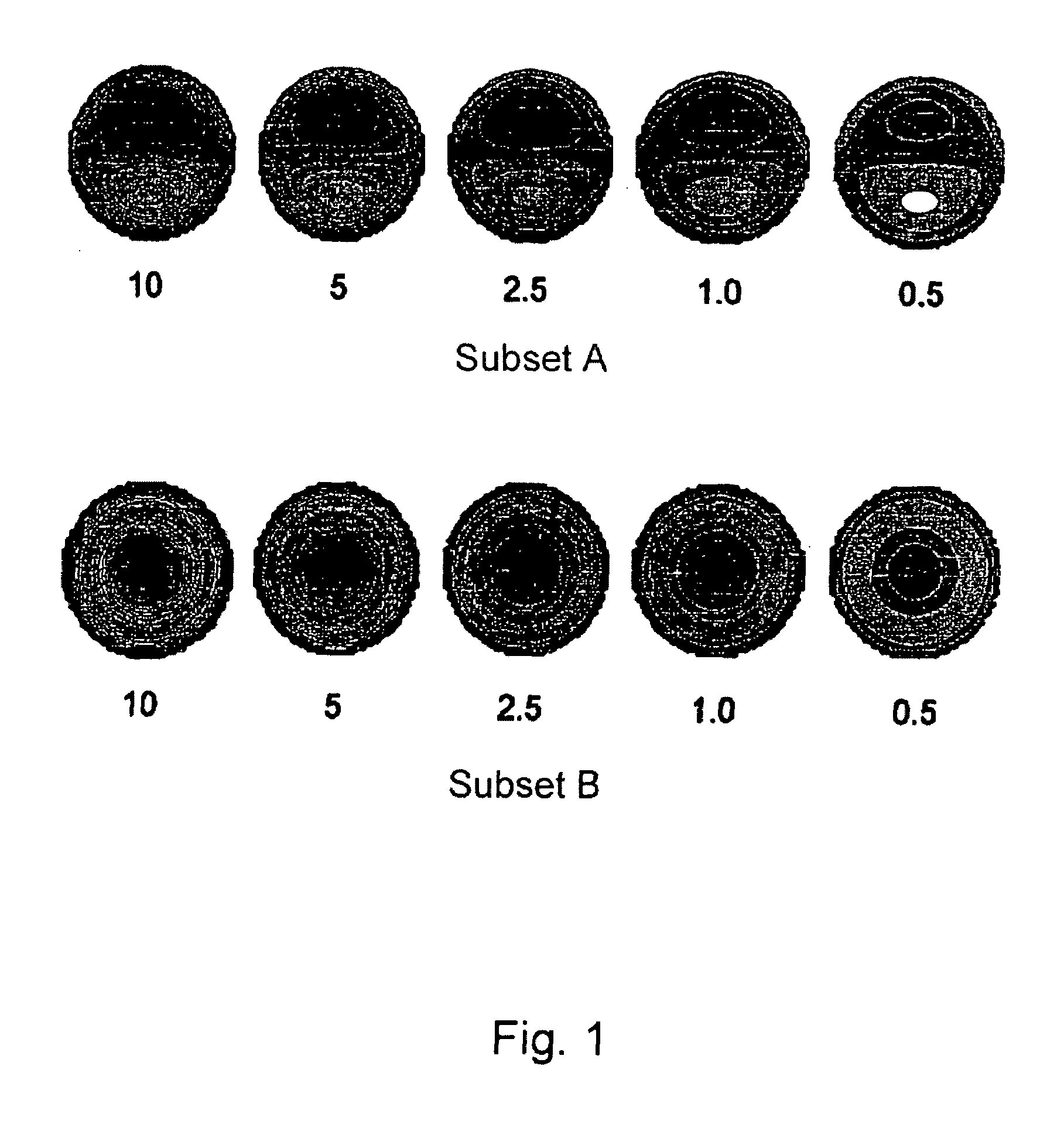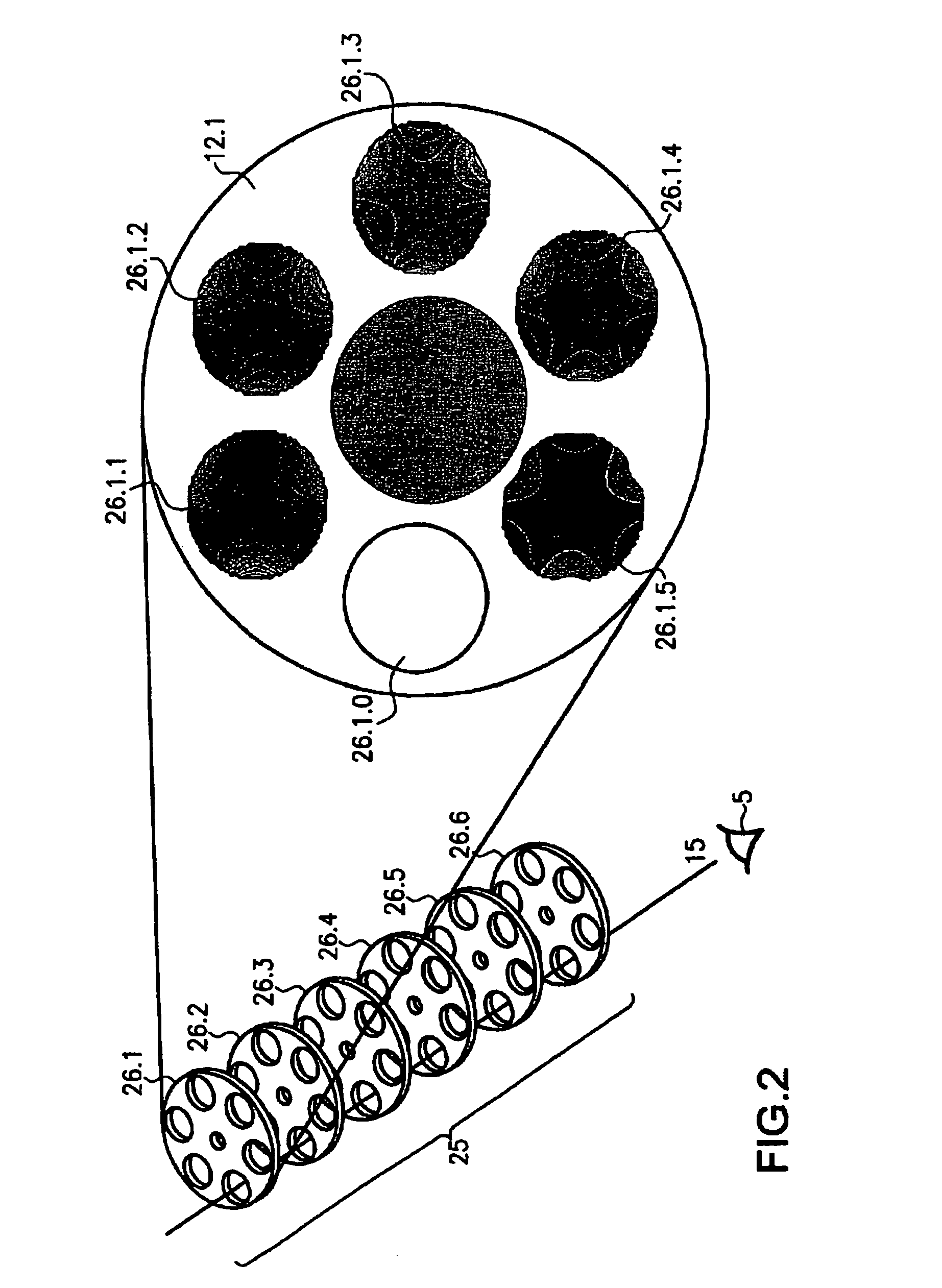Method and device for the subjective determination of aberrations of higher order
a technology of higher order and aberration, applied in the field of higher order subjective determination, can solve the problems of inability to use adaptive lenses industrially, and inability to subjectively fine adjus
- Summary
- Abstract
- Description
- Claims
- Application Information
AI Technical Summary
Benefits of technology
Problems solved by technology
Method used
Image
Examples
Embodiment Construction
[0036]A plate set for 3rd-degree coma image errors of the x axis and 3rd-order spherical aberration, each with a subset for polynomial coefficients from 0.5 to 10, is schematically represented in FIG. 1. The plate set for 3rd-degree coma image errors in the x axis according to the formula W(p,θ)=(3p2−2p) sin(θ) is designated A and the sub-plate set for the image error of the 3rd-order spherical aberration according to the formula W(p,θ)=6p4−6p2+1 is designated B. These two subsets A and B together form the plate set according to FIG. 1. Subsets A and B each consist of five individual plates which are laid out within the defined Zernike polynomial for different polynomial coefficients, i.e. amplitudes. Thus subset A has individual plates for polynomial coefficients 0.5, 1.0, 2.5, 5 and 10. Subset B also consists of five plates with different polynomial coefficients 0.5, 1.0, 2.5, 5 and 10. With this plate set, consisting of subsets A and B, image errors can then be determined and com...
PUM
 Login to View More
Login to View More Abstract
Description
Claims
Application Information
 Login to View More
Login to View More - R&D
- Intellectual Property
- Life Sciences
- Materials
- Tech Scout
- Unparalleled Data Quality
- Higher Quality Content
- 60% Fewer Hallucinations
Browse by: Latest US Patents, China's latest patents, Technical Efficacy Thesaurus, Application Domain, Technology Topic, Popular Technical Reports.
© 2025 PatSnap. All rights reserved.Legal|Privacy policy|Modern Slavery Act Transparency Statement|Sitemap|About US| Contact US: help@patsnap.com



